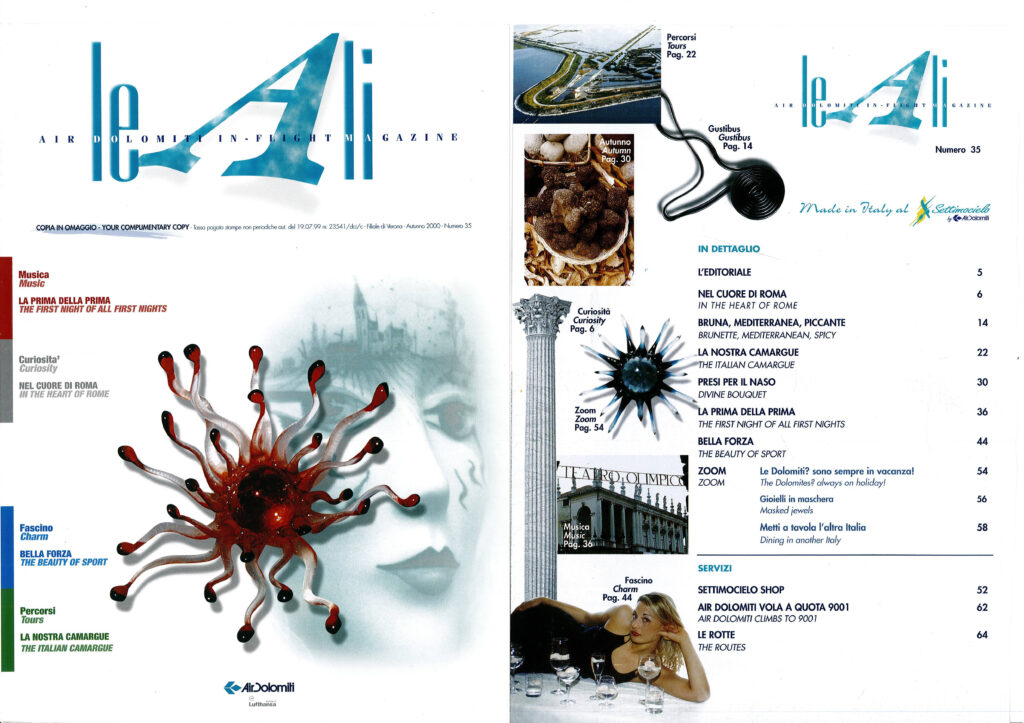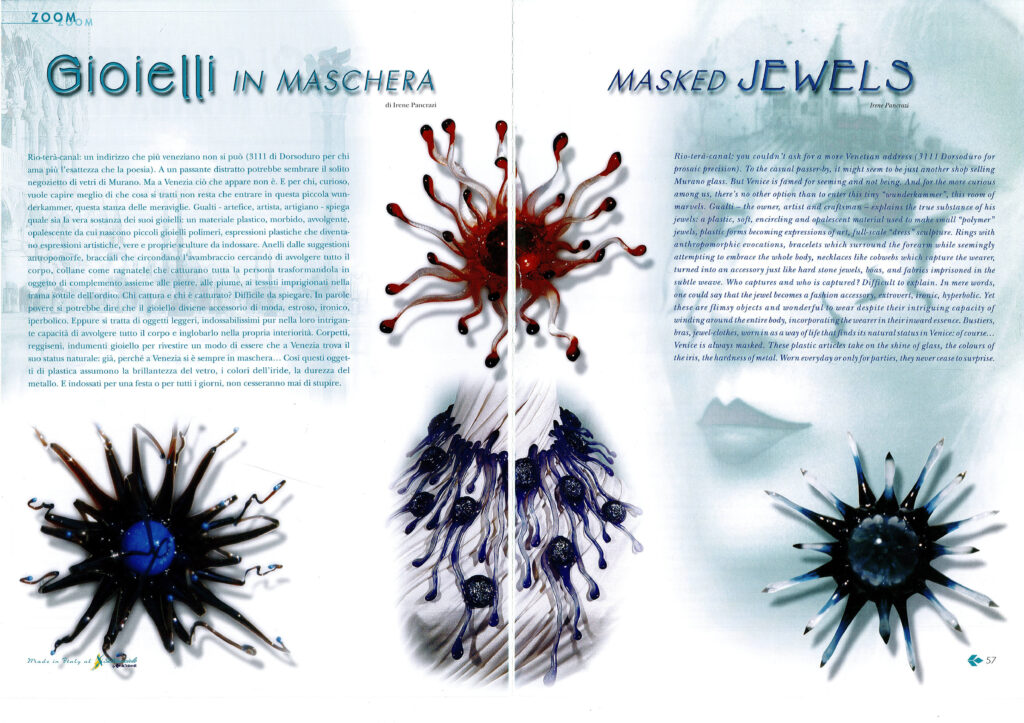AIR DOLOMITI IN – FLIGHT MAGAZINE
Autunno 2000 – Numero 35
Cover photo,
photo page 1,
editorial page 56 and 57 by Irene Pancrazi


GIOIELLI IN MASCHERA
Rio terà-canal: un indirizzo che più veneziano non si può (3111 di Dorsoduro per chi ama più l’esattezza che la poesia). A un passante distratto potrebbe sembrare il solito negozietto di vetri di Murano. Ma a Venezia ciò che appare non è. E per chi, curioso, vuole capire meglio di che cosa si tratti non resta che entrare in questa piccola wunderkammer, questa stanza delle meraviglie. Gualti – artefice, artista, artigiano – spiega quale sia la vera sostanza dei suoi gioielli: un materiale plastico, morbido, avvolgente, opalescente da cui nascono piccoli gioielli polimeri, espressioni plastiche che diventano espressioni artistiche, vere e proprie sculture da indossare. Anelli dalle suggestioni antropomorfe, bracciali che circondano l’avambraccio cercando di avvolgere tutto il corpo, collane come ragnatele che catturano tutta la persona trasformandola in oggetto di complemento assieme alle pietre, alle piume, ai tessuti imprigionati nella trama sottile dell’ordito. Chi cattura e chi è catturato? Difficile da spiegare. In parole povere si potrebbe dire che il gioiello diviene accessorio di moda, estroso, ironico, iperbolico. Eppure si tratta di oggetti leggeri, indossabilissimi pur nella loro intrigante capacità di avvolgere tutto il corpo e inglobarlo nella propria interiorità. Corpetti, reggiseni, indumenti gioiello per rivestire un modo di essere che a Venezia trova il suo status naturale: già, perché a Venezia si è sempre in maschera….. Così questi oggetti di plastica assumono la brillantezza del vetro, i colori dell’iride, la durezza del metallo. E indossati per una festa o per tutti i giorni, non cesseranno mai di stupire.
MASKED JEWELS
Rio terà-canal: you couldn’t ask for a more Venetian address (3111 Dorsoduro for prosaic precision). To the casual passer-by, it might seem to be just another shop selling Murano glass. But Venice is famed for seeming and not being. And for the more curious among us, there’s no other option than to enter this tiny “wunderkammer”, this room of marvels. Gualti – the owner, artist and craftsman – explains the true substance of his jewels: a plastic, soft, encircling and opalescent material used to make small “polymer” jewels, plastic forms becoming expressions of art, full-scale “dress” sculpture. Rings with anthropomorphic evocations, bracelets which surround the forearm while seemingly attempting to embrace the whole body, necklaces like cobwebs which capture the wearer, turned into an accessory just like hard stone jewels, boas, and fabrics imprisoned in the subtle weave. Who captures and who is captured? Difficult to explain. In mere words, one could say that the jewel becomes a fashion accessory, extrovert, ironic, hyperbolic. Yet these are flimsy objects and wonderful to wear despite their intriguing capacity of winding around the entire body, incorporating the wearer in their inward essence. Bustiers, bras, jewel-clothes, worn in as a way of life that finds its natural status in Venice: of course… Venice is always masked. These plastic articles take on the shine of glass, the colours of the iris, the hardness of metal. Worn everyday or only for parties, they never cease to surprise.

